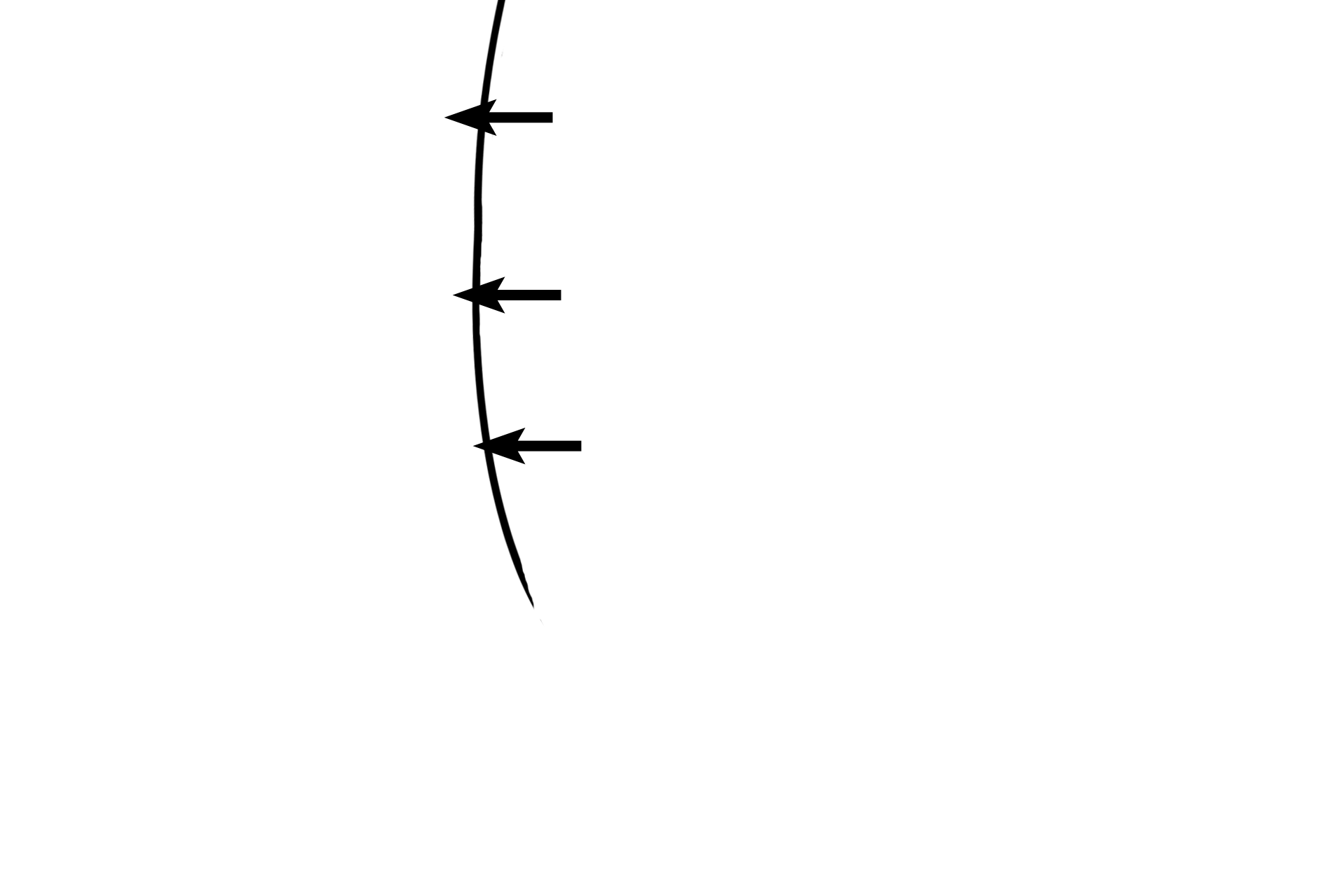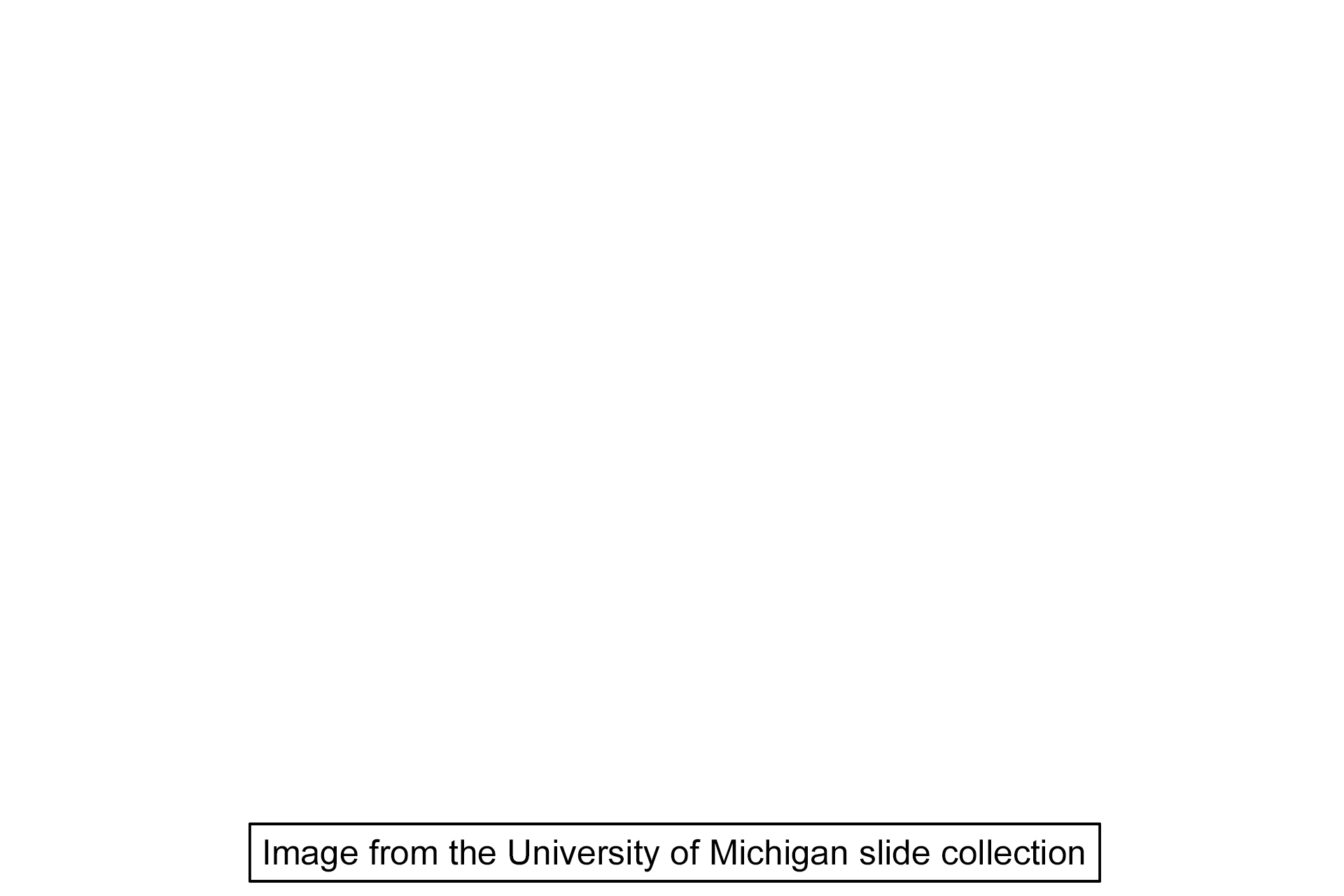
Dentogingival junction
The hard tissue of the tooth meets the gingival tissue at the dentogingival junction, comprises three types of epithelia: the orthokeritinized epithelium of the masticatory mucosa which transitions into the sulcular epithelium adjacent to the enamel and lastly, the junctional epithelium at the dentogingival junction. 100x, (inset, 10x)

Enamel >
Enamel is 96% mineralized and therefore is highly susceptible to demineralization with acid. Enamel is only created during the development of the tooth as the ameloblasts that make enamel are lost following tooth eruption. The enamel in this preparation was removed during the process of demineralization, a step required for tissue sectioning and subsequent hematoxylin and eosin staining. The approximate location of the enamel is indicated by the black fill.

Dentin >
Dentin makes up the bulk of the mineralized tissues of the tooth. Dentin is less mineralized than enamel at 70% calcification. Unlike enamel, dentin is produced throughout the life of the tooth by odontoblasts. The dentin in this micrograph is demonstrating globular dentin, deposited during early dentinogenesis. The line indicates the original margin of the enamel.

Gingival sulcus >
The gingival sulcus is a circular moat around the tooth and is located between the sulcular epithelium and the enamel of the tooth. The approximate margin of the enamel, lost during the preparation of this decalcified tooth, is illustrated by the line.

Sulcular epithelium >
The sulcular epithelium faces the sulcular sulcus and is composed of a stratified squamous nonkeratinized moist epithelium. The sulcular epithelium is represents a continuation of the masticatory epithelium. The line indicates the original margin of the enamel.

Junctional epithelium >
The junctional or attachment epithelium is a stratified squamous nonkeratinized epithelium that adheres firmly to the enamel by hemidesmosomes. The junctional epithelium is derived from the reduced enamel epithelium during tooth development and typically contains many inflammatory cells. The line indicates the original margin of the enamel.

Masticatory mucosa >
The free and attached gingiva are covered by a masticatory mucosa with a stratified squamous orthokeratinized moist epithelium. Its deeply indented junction with tall papillae of lamina propria greatly reduces mobility of the epithelium providing protection against sheer forces. The line indicates the original margin of the enamel.

Image source >
This image was taken of a slide in the University of Michigan collection.